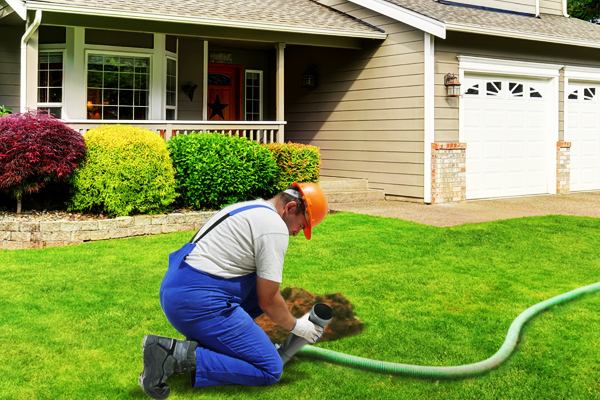Call This Friday to Get $25 OFF
Clean Solutions, Dirty Jobs – Done Right. Reliable. Responsive. Remarkable.
Call This Friday to Get $25 OFF
Clean Solutions, Dirty Jobs – Done Right. Reliable. Responsive. Remarkable.
When it comes to maintaining a healthy septic system, every little choice matters—especially the type of toilet paper you use. Many brands advertise their products as “septic-safe,” but what does that really mean? And how can homeowners be sure their toilet tissue isn't slowly sabotaging their system? The truth is, not all “septic-safe” products are created equal. That's where the Toilet Tissue Test comes in.

The term “septic-safe” is often used as a marketing buzzword, but its definition isn’t regulated by the government. Ideally, a septic-safe toilet paper should dissolve quickly in water, minimizing the risk of clogs or buildup in your pipes and septic tank. However, some products that bear this label still break down too slowly, contributing to sludge and scum that can overwhelm your system.
This is where problems start. If your toilet paper doesn’t degrade as expected, it can lead to increased frequency of septic tank pumping—or worse, a system failure. In fact, experienced septic company professionals often cite poor toilet paper choices as one of the leading contributors to unnecessary strain on septic tanks.
Fortunately, you don’t have to take a manufacturer’s word for it. You can perform a simple Toilet Tissue Test at home to see how easily your preferred brand of toilet paper breaks down.
The septic system is an onsite waste treatment facility, and it is incredibly reliable. However, the system is only as effective…
Imagine flushing your toilet and then suddenly realizing that your backyard has turned into a swampy mess. This unpleasant experience is…
Soil testing is a critical step in various construction and environmental projects. It provides essential information about the ground conditions, which…
Grease traps are remarkable tools that help keep your establishment clean and free from bad odors. Septic Connection has a dedicated…
If you have just moved into a new home or property that relies on a septic system for waste and wastewater…
Fill a clear jar or container with water. Place 2-3 squares of the toilet paper into the water. Seal the container and shake vigorously for about 10 seconds. Observe the results.
If the toilet paper begins to dissolve or break into small pieces quickly, it’s likely a good choice for your septic system. However, if it remains largely intact, floats in chunks, or settles in thick layers, it may not be as septic-safe as advertised.
A septic system relies on bacteria to break down waste. When materials like non-dissolving toilet paper enter the tank, they can form blockages and interfere with bacterial activity. Over time, this leads to a buildup of solids that requires more frequent septic tank pumping. In severe cases, undissolved materials can clog drain fields and pipes, resulting in costly repairs.
Septic companies regularly encounter households where the misuse of toilet paper has shortened the lifespan of their system. Choosing the right paper can not only improve your system’s efficiency but also extend the time between professional service visits.
When choosing toilet paper for a home with a septic system, consider these features.
If you're unsure which brand is best, consult with experts at Septic Connection. They can provide recommendations based on years of service and practical knowledge of what works in your area.
Maintaining a healthy septic system doesn’t stop at routine septic tank pumping—it extends to everyday habits like the toilet paper you flush. While it may seem trivial, using a truly septic-safe toilet paper can prevent damage and reduce long-term costs. Perform the Toilet Tissue Test at home, and talk to professionals at Septic Connection to ensure you’re making the best choices for your system. After all, when it comes to septic maintenance, it’s better to be proactive than to pay for preventable problems down the line.
Hosting a big party at your home can be exciting, but it also brings a unique set of challenges, especially when you rely on a septic system. Between extra guests,…
Read moreWhen most people think about septic systems, they picture a simple underground tank that collects wastewater. But modern septic systems are far more advanced than that. Thanks to new technology,…
Read more